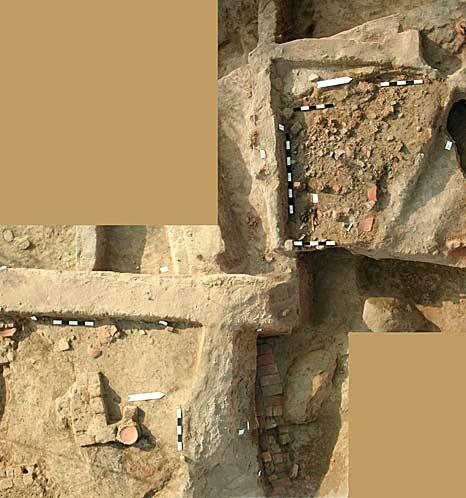Composite overview of the steatite and faience workshop area in Trench 54 South taken using the bamboo ladder. Two images were pieced together on the computer to make this composite. North is to the right.
Previous attempts to understand the complex transition between what is commonly only referred to as the Indus Valley Civilisation (2600-1900 B.C.) and the Early Historical Period of South Asia (beginning around 600 B.C.) were limited by the nature of the collected data and the prevailing political and academic models for culture change.These earlier models portrayed the Indus Valley Civilisation as an enigmatic urban culture that sprang up and then disappeared, eventually to be followed by an alien and unrelated urban culture during the Early Historic period. Needless to say, the current state of research, including archaeological, anthropological, economic, historical and linguistic evidence no longer supports these simplistic models and they should be replaced.

